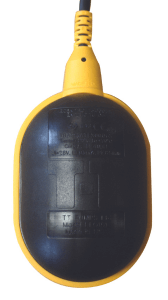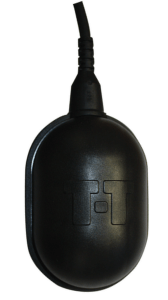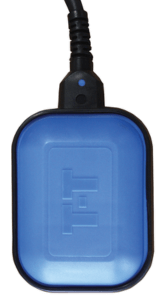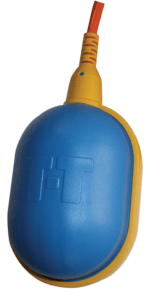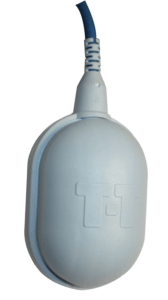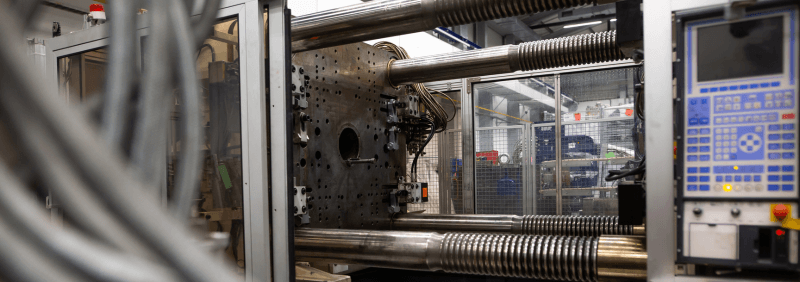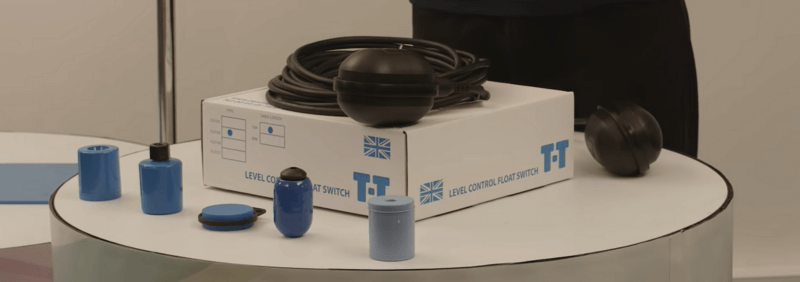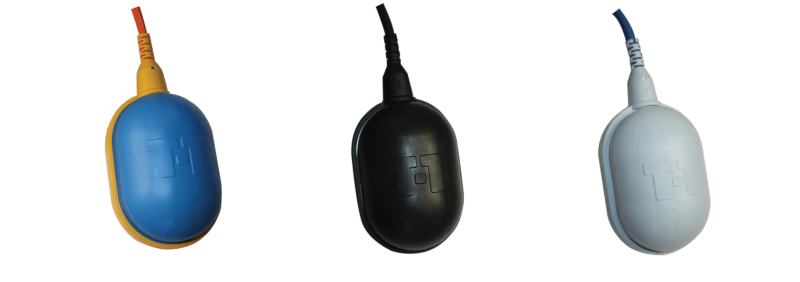Controls Know-How: What is a Float Switch?
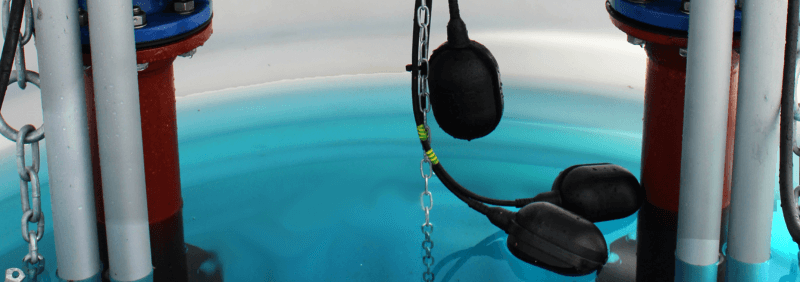
A float switch is a simple device that is used to detect the level of liquid in a tank and control an external component, such as a pump, valve, alarm or other device. As the name suggests, the switch floats on top of the liquid and typically uses an electrical microswitch to control the component as the liquid level rises and falls to a pre-set level.
How does a float switch work?
A float switch usually works via a chrome-plated or stainless steel ball, which is secured in a rolling chamber and used to operate an electrical microswitch. As the liquid in the tank well or sump goes up or down, a sensor detects when it has reached a predetermined level and uses the electrical microswitch to switch the component (such as a pump or alarm) on and off accordingly. Float counterweights may also be used to balance and control the differential switching point of the float and can be fixed to any chosen point on the cable as required.
Common float switch applications
Float switches are used for a wide variety of filling and emptying applications to provide pump control and high/low-level warning indication. They are used across a diverse range of industries including sewage treatment, agriculture, food processing, leisure, mining and many more, providing a simple and cost-effective level control solution.
We offer a range of high-quality float switches to suit many different requirements, including:
FLO101 - ATEX/IECEx Approved for Zone 0 applications and low current switching.
FLO102 - Non-mercury operated and polypropylene housing for general use.
FLO103 - Non-mercury operated and polypropylene housing for general use.
FLO106 - EPR insulated cable for diesel and fuel oil applications.
FLO107 - WRAS-Approved for use in potable water handling.
Each is constructed with a high quality polypropylene housing, providing a high level of strength and resistance to most liquids. Our float switches are easy to install and have been rigorously tested to provide reliable operation over a long period of time.
THINGS TO CONSIDER WHEN BUYING A FLOAT SWITCH
Carefully selecting the float switch will help ensure you get a reliable, safe and long-lasting component that fully meets the demands of the application and requires minimal maintenance.
LIQUID TYPE
The right type of float switch for your specific application will depend on a number of different factors including the type, density and viscosity of liquid.
For example, for potable water (drinking water) applications, you will need to choose a float that is constructed from WRAS approved materials, such as the Potable FLO107.
Likewise, applications involving liquids such as diesel fuels or heavy sludge will require a product constructed for that type.
ENVIRONMENT
Careful consideration should be given to the operating environment. For example, can the float withstand immersion pressure at a specific depth? Is it constructed to withstand impact from a turbulent installation in a more challenging environment? We offer a wide range of float switches that have pressure ratings of up to 5 bar.
Float switches may use various materials that make them suitable for different applications. For example, products using rubber cables (like HO7RN8-F and HO5RN-F) are ideal for water and damp atmospheres, whereas PVC cables float switched like the FLO106 provide resistance to oils and are ideal for use with diesel and fuel.
When being installed in a hazardous environment including those involving explosive gas, you will require an ATEX rated float switch paired with a galvanic isolation barrier or relay. Our FLO101 float switches are specially designed for zone 0 applications and low current switching, being both ATEX and IECEx approved.
For longevity, ensure that the rolling chamber of the switch limits the Nm of force that is exerted on the microswitch during contact. Finally, carefully research the electrical element of the switch to make sure it meets your requirements and can be operated safely.
Explore our range of Level Control Float Switches. For advice on choosing the right float switch for your specific application, chat to the experts at T-T Controls on +44 (0)1630 647200.

